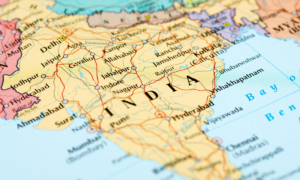I would like to put your attention on a very controversial question or topic named, Hijab: Ban Right or Wrong?
There was a girl for not wearing a hijab so,
Hijab: Ban Right or Wrong?
while being felicitated in a function for bagging first position in class 12 boars. She says – ” I have belief in Allah and follow Islamic principles. But I don’t need to wear a hijab to prove myself a good Muslim. ” On the other hand, Nadal Elmar. a 21-year-old woman who is wearing a Hijab since the age of 12.
These two women have very fingering choices, but one thing binds them together. They are both ridiculed for their respective choices. Aroosa has criticized Muslims for not wearing the hijab. Whereas Nadal Wlmak has been criticized by non-Muslims for her very choice of wearing a hijab.
I am telling you this against the backdrop of a huge controversy about the hijab that has broken out in Karnataka and across India. You must have already seen a lot of videos about his issue. Instead, I will tell you the pro hijab arguments and the anto-hijab arguments. And then you can decide for yourselbelieff by balancing both.
” Religious symbol has become one of the most polarizing debates in the recent past .” Before discussing the arguments, let us first know what happened on the ground. Anushka Ravi sood did a detailed analysis of this issue through her ground report. She wrote that for a long time girls were attending college and were not wearing a hijab in the classrooms. after being supported in doing so by families and a student body called campus Front of India. A senior leader of a Muslim organization said that the body had tried its best to convince the families that it was acceptable to remove the hijab in class.
CIF alleges that they stepped in because the college wasn’t listening to their demands. Let me clarify-Just because girls were removing their hijabs earlier in the classrooms doesn’t mean that now, the same girl cannot demand to wear hijab in the classrooms. Just because untouchability is being practiced for a long time, doesn’t mean that Dalits can’t protest against it. This is why we need to understand the arguments both pro and anti hijab to understand the issue better. First, let’s start with the arguments against the hijab.
hijab is considered a religious obligation for many people- and not a choice. Many women of many major religions have to cover their heads. A similar thing is seen in Islam. The Quran instructs both men and women to observe modesty in their dress. by modesty, it is meant they should wear proper clothes. However, many women who wear hijab talk about it as a way of following their religion. For example, Nadal Elmak, about whom, we talked in the introduction, but the problem arises when it is said that a woman can choose if she wants to were a hijab or not. And in reality, a religious rule is framed about it.
So while wearing the hijab might be a choice for several women, In 2015, a research study was conducted about the hijab in Egypt. About 21% of Egyptian women equated hijab with ” prison ” in a survey. Several political thinkers in India have spoken about this as well. Second, the hijab is considered to be a symbol of patriarchy. This is against women and a means through which men can control women.
This is against women and a means through which men can control women. If you put forward this argument, maybe Muslim men would comment that it is for the safety of the girls. If not this, then the same argument is repeated- ” Hijab is her choice. She is wearing it because she wants to “. but this choice is not a real one- this is an illusion of choice for several women. For instance, we talked about Nadal in the introduction – a 21-year-old woman who has been wearing the hijab since she was 12.
Now, you think If a 12-year-old girl is asked to wear the hijab, is she asked whether she still wants to wear it when she turns 18? For a lot of women, it is not a choice. They might choose if they want to wear a blue hijab or a red one but most women cannot choose whether they want to wear a hijab or not. And wearing the hijab plays in deciding whether a Muslim woman is going to work or not. Research on Muslims in India showed that before they work, women had to think about it.
Similarly, we should also know about what Muslim women in India have to go through if they don’t wear the hijab. For instance, in 2015, a man named Ghaffar Hussain Killed her 4-year-old daughter for not covering her head. When the girls in Karnataka were protesting to be allowed to wear the hijab, a counter-protest was organized by student groups demanding a Uniform Dress Code. This raises a very important question, should religion and education be allowed to mix? Regarding this issue, the minister of Education of Karnataka said – ” Schools and colleges are not a place to practice Dharma, ” boys and girls behaving according to their religion hurts equality and unity.
” Principles of at least three colleges in Udupi district in Karnataka said that while some Muslim students had always worn the hijab to classes, the number had increased since January. One principal said- ” There is no explicit rule that bans hijab in the college, but there is no rule that permits it either “. But even you would concede that he isn’t any argument against Hijab. If you want to bar the hijab from educational institutes, you will have to bear many other religious things from schools.
Hijab: Ban Right or Wrong?

hijab ban
For instance, Saraswati Puja takes celebrated every year in every school and college in Bengal; also there are curriculums in Madhya Pradesh with tales from Mahabharat and Ramayana. Now, let us talk about the arguments in the favour of Hijab. First, Hijab is a matter of identity for a lot of Muslim women. According to the secretary of a Muslim Organization in Udupi, the fight over the right to wear the hijab has inspired other girls from the community.
Hijab: Ban Right or Wrong?
He opines that the girls believe that just because they weren’t wearing a hijab earlier doesn’t mean that they cannot do so in the future.
Basically, through this, they want to show that they are proud Muslim women and this is essential for their identity. The second argument is about choice. The Muslim women that are wearing the hijab are doing it out of their choice. The have not been forced. For instance, in the 2016 Rio Olympics, there was a 19-year-old Egyptian volleyball player This caught a lot of media attention. While the German players wore bikinis, the Egyptian players wore long-sleeved tops and ankle-length trousers.
The 19-year-old Egyptian player said wearing the hijab ” doesn’t keep me away from the things I love to do “. for example- Playing Volleyball. A survey in Bangladesh reflected that 80.6% of women claimed that wearing a hijab is their own choice. But like we discussed earlier, is it a choice if heels as young as 12 years old are being asked to wear it? So now that we have heard the arguments of both sides. Now, I want to tell you two key issues of this situation. First-The the issue of choice.
the question is whether religion is a choice or not. A lot of research has shown how ghoongat or hijab affects the life outcomes of women. If they can work or not or go outside or not. If you ask a lot of women, they would say that Goong or hijab is not restrictive for them and it might be true. But both you and I are aware that for most people, religious practices are not a choice. We do not decide the religion of the family we are born in. Pew research has shown that only in rare cases do Indians convert.
If there was a choice, surely then 0.7% of Hindus or 0.3% of Muslims would have converted to a different religion? The second issue is about politics. We can clearly from the TV coverage and social media comments that a lot of people are concerned about the hijab. But are they commenting about the hijab, because they care about the future of the girls? As usual, it became a Hindu-Muslim issue and people got an opportunity to throw dirt at each other’s religion. In an ideal situation, if some groups did care about the future of the girls, clearly there are better ways to explain that rather than wearing saffron scarves to classes which ultimately led to the shut down of schools and colleges.
We know that this only increases religious polarization which benefits some religious groupset and harms the common people. For example, when the colleges were shut down, who benefited from that? This was my point of view about it. hopefully, you would have found it informative.I would like to put your attention on a very controversial question or topic named, Hijab: Ban Right or Wrong?
























